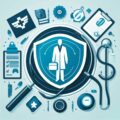Engaging Introduction
Imagine this: globally, losses due to healthcare fraud tally up to an astounding $260 billion annually, according to estimates from the Association of Certified Fraud Examiners. More shocking is this dollar figure does not exclusively represent outright criminal activity. Much of it arises from overbilling and inadvertent errors, further underscoring the complex nature of healthcare fraud. By addressing this issue, we uncover the vast potential of how predictive analytics can reduce healthcare fraud.
Background: Importance of This Issue
Healthcare fraud is not just a financial burden; it deeply erodes faith in our health systems and compromises quality of care. It’s clear that traditional approaches to fraud detection, such as rule-based software systems and random audits, are inadequate for the enormity and sophistication of the problem. The future lies in leveraging modern technologies like Artificial Intelligence (AI) and predictive analytics, that hold the key to major strides in healthcare fraud prevention.
AI Solutions: How Predictive Analytics Can Reduce Healthcare Fraud
Predictive analytics methods can revolutionize healthcare fraud detection and prevention by identifying patterns and anomalies hidden in massive datasets. Employing machine learning algorithms, these AI solutions can predict future events based on past behavior.
These algorithms can be trained to recognize anomalies like double billing or upcoding. For example, a clinician consistently ordering unusually expensive tests for common conditions could trigger an alert, prompting a closer look. They also can readily identify patterns characteristic of “phantom billing” or “unbundling”. The result? More efficient, more exact, and swifter detection of fraud.
Future Trends: The AI Revolution in Healthcare
Artificial Intelligence is only beginning to reshape how we look at healthcare fraud. The machine learning algorithms used today will continue to evolve, becoming much more nuanced and intelligent. They will be bolstered by natural language processing to analyze unstructured data like patient notes, effectively reducing cases of fraud by misrepresentation. More sophisticated AI models will be developed to predict the likelihood of fraud even before any transaction gets coded, thereby preventing fraud before it occurs.
Case Studies: AI at Work in Real-World and Hypothetical Scenarios
To understand how predictive analytics can reduce healthcare fraud, consider the case of a healthcare provider working with an AI firm. The AI platform studied their billing datastore and quickly pinpointed areas of frequent overtesting and potential upcoding, saving the provider millions.
A pharmaceutical company might leverage AI in a similar manner. By analyzing past and present expenditure patterns, predictive analytics could flag suspected kickback payments to doctors. This would allow the company to investigate and address potential fraud swiftly.
Actionable Takeaways: Advice for Industry Professionals
1. Invest in Modern Technology: AI and predictive analytics should no longer be viewed as optional. They’re essential tools in the fight against healthcare fraud.
2. Data Cleaning: Garbage data gives garbage results. Ensure that your data is accurate, organized, and of high quality before feeding it into an AI model.
3. Continuous Training: AI is a learning tool. Feed it new data regularly to improve its accuracy.
SEO Optimization and Strong Call-to-Action
In conclusion, the potential of how predictive analytics can reduce healthcare fraud is immense. As a $260 billion-a-year problem, the solution’s value proposition is undeniable. Investing in these technologies today is an investment in the future of health, financial stability, and patient trust. As industry professionals, let’s not be on the defensive. Let’s harness the power of predictive analytics to prevent healthcare fraud; because every step towards reducing fraud is a step towards better healthcare for all. Act now, and secure a reliable and trustworthy future in the health industry.



